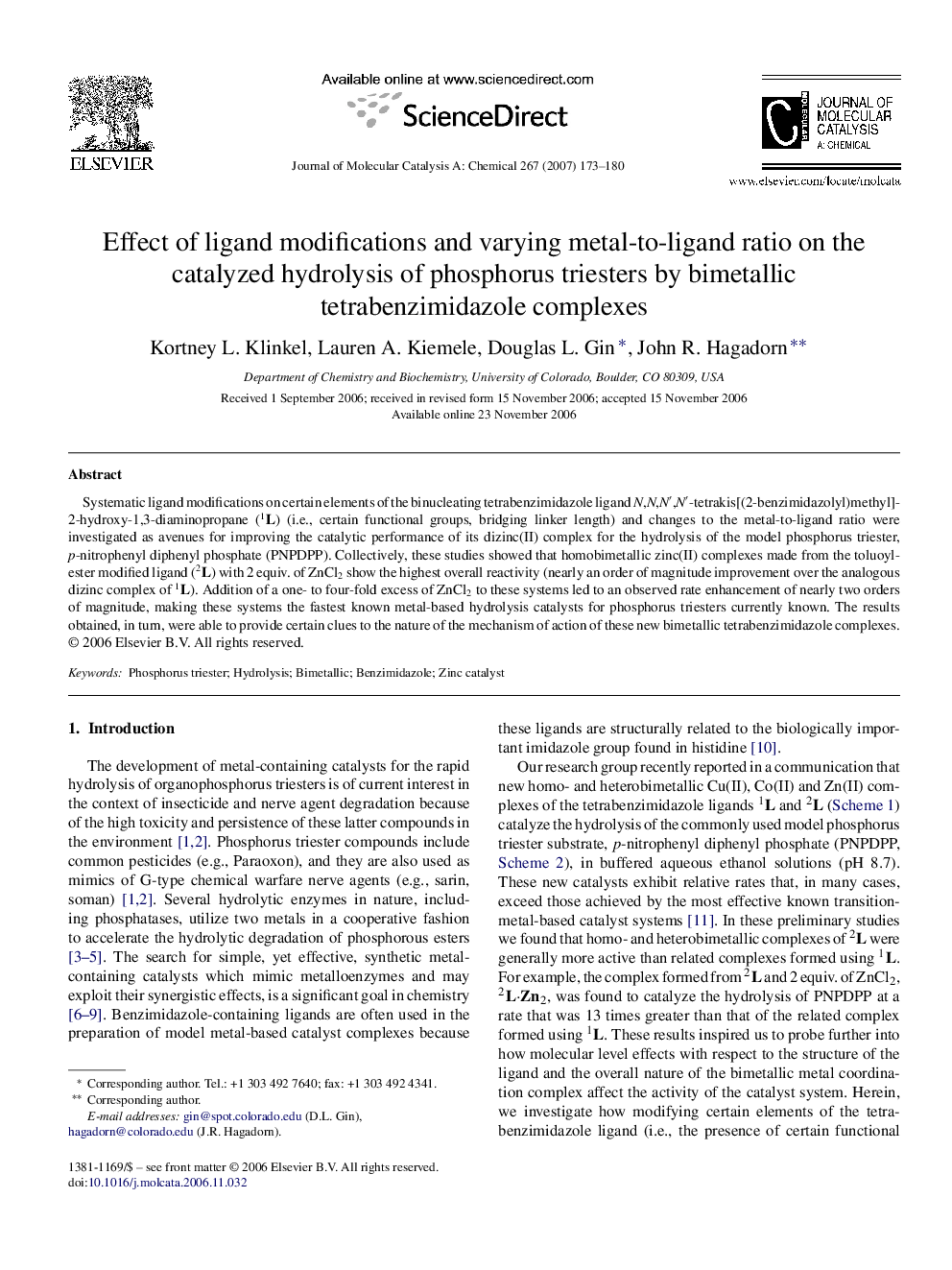| Article ID | Journal | Published Year | Pages | File Type |
|---|---|---|---|---|
| 68795 | Journal of Molecular Catalysis A: Chemical | 2007 | 8 Pages |
Systematic ligand modifications on certain elements of the binucleating tetrabenzimidazole ligand N,N,N′,N′-tetrakis[(2-benzimidazolyl)methyl]-2-hydroxy-1,3-diaminopropane (1L) (i.e., certain functional groups, bridging linker length) and changes to the metal-to-ligand ratio were investigated as avenues for improving the catalytic performance of its dizinc(II) complex for the hydrolysis of the model phosphorus triester, p-nitrophenyl diphenyl phosphate (PNPDPP). Collectively, these studies showed that homobimetallic zinc(II) complexes made from the toluoyl-ester modified ligand (2L) with 2 equiv. of ZnCl2 show the highest overall reactivity (nearly an order of magnitude improvement over the analogous dizinc complex of 1L). Addition of a one- to four-fold excess of ZnCl2 to these systems led to an observed rate enhancement of nearly two orders of magnitude, making these systems the fastest known metal-based hydrolysis catalysts for phosphorus triesters currently known. The results obtained, in turn, were able to provide certain clues to the nature of the mechanism of action of these new bimetallic tetrabenzimidazole complexes.
Graphical abstractSystematic ligand modifications on certain elements of the binucleating tetrabenzimidazole ligand N,N,N′,N′-tetrakis[(2-benzimidazolyl)methyl]-2-hydroxy-1,3-diaminopropane (1L) (i.e., certain functional groups, bridging linker length) and changes to the metal-to-ligand ratio were investigated as avenues for improving the catalytic performance of its dizinc(II) complex for the hydrolysis of the model phosphorus triester, p-nitrophenyl diphenyl phosphate (PNPDPP). Figure optionsDownload full-size imageDownload as PowerPoint slide
